skip to main |
skip to sidebar
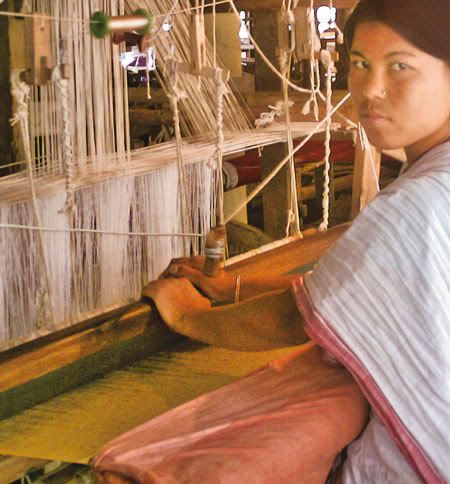
Sualkuchi or Soalkuchi is situated in the bank of Mighty River Brahmaputra and it is about 35Km from Guwahati , approx 45 min Journey from Guwahati through car.
Sualkuchi is the textile center of Assam, with large number of cottage handloom industries for which it is also know as "Manchestar of the East".
Sualkuchi is famous for producing Assam Silk or Muga or Golden Thread. Muga Silk is obtained from a a species called silkworm that is only found in this part of India only and nowhere in the world can you find this species. It is the one of the cosliest garment in India.
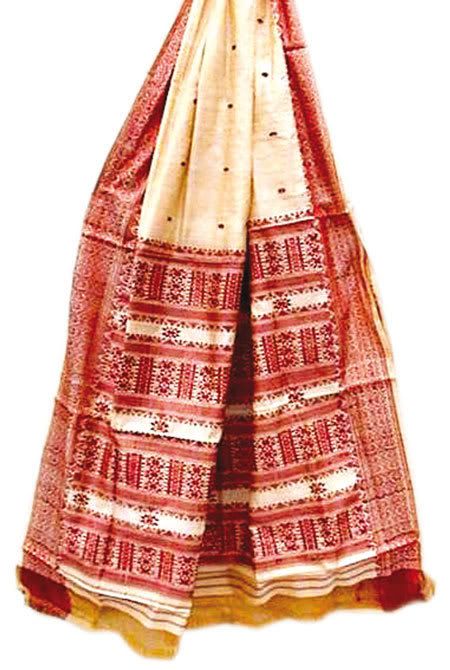


Golden Colour of Muga is unique, there is hardly any fabric in the world which has a natural shade of gold, the fabric is also glossy. Muga fabric can be hand washed and with each wash the luster or shine of the fabric increases.The most interesting thing is the durability of the fabric, it is the most durable amongst all silks. Some of the Muga clothing last for more than 50 years and very often Muga Silk clothing outlives the owner too. It an be used for furnishing materials and as decorative items besides dress materials.

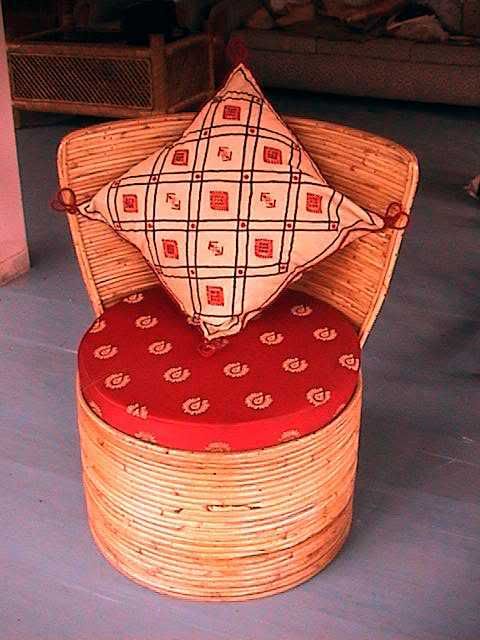
Muga Silk is a must have for every Assamese bride in Assam, the bridal mekhla chaddar is a prized possession with most girls from Assam. A mekhla is a cross between a sarong and a lungi and the chadar is worn with a special crisscross pleat down the front to give it the elegance required to show off the exquisite weaves that typify Assamese creations. Some additional qualities of Muga Silk is it can retain its original colour, hardness and other qualities up to 200 degree Celsius, highest tensile strength among all the natural fibers and it can absorb UV ray upto 85.08 %.
Models displaying Muga Fabrics :


Displaying of Muga fabrics by Fashion Designers of Assam in Bangkok :
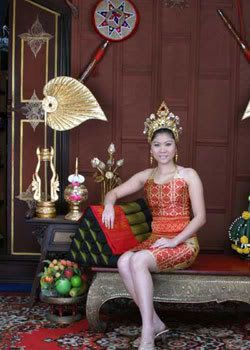


Every household in Sualkuchi is involved in Silk Trade. Considering that it takes two months to weave a saree and that it takes 1,000 cocoons to yield 125 gm of silk and that it takes about 725 gm to 1,000 gm for a saree, one can figure out why these creations are so expensive. The traditional colours like red, green and black provide a dramatic effect against the golden colour of the Muga fabric. The weavers have extended them to include colours like yellow, green, blue, beige, silver, coppery pink, brown and but the motifs remain traditional. The designs-woven or embroidered -show an amazing variety: trees, creepers, leaves, flowers, peacocks, birds and animals in stylised forms. Add to these the ethnic yet very modern geometric tribal motifs of the
North-East states of India results in an unparalleled creation.Wedding sarees are adorned with gold and silver thread work. Looms are narrow, hence, the borders are woven separately and then stitched on, which is another facet special to the Assamese Muga saree. This also makes the saree heavy, formal, rich and exquisite. It is said that, Muga silk was patronised only by the Royalty and common people were forbidden from wearing it.
Mayong is 34km away from Guwahati near the bank of Mighty Brahmaputra river, the nature and beauty here is still unspoiled and spell bounding.

There are several stories pertaining to the name Mayong , few say it to the land of Illusions or Maya, therefore the name Mayong originates from this aspect. During the time when northeast states were one under a common name Assam, it is believed that manipuris from the maibong clan used to inhabitat this area therefore, the name maibong became mayhong with time, since Mayong is a hilly area, it was full of elephants and in Manipuri language an elephant is called Miyong, hence few believe that Miyong became Mayong with time . There is also a legend associated with the name , it is said that the sacred parts of Godess Shakti, hence the older generation called it as Maa- R- Ongo, (parts of the goddess ), and later on it became Mayong.
Mayong was once called the Land of Black Magic, it is said that during the medival period in India the ancient Mayong kingdom occupies a very important palce in magic. It remain the indian capital of Black Magic and Witchcraft.
Mayong and Pragjyotishpura (ancient name of present day Assam) find place in several mythological epics including Mahabharata. Chief Ghatotkacha of Kachari Kingdom took part in ‘The Great Battle of Mahabharata ’ with his magical powers.
From time immortal, it is famous for supernatural stories. It is said that people come here from far and wide off area to learn magic. Some of the stories are like this : Once, a government employee was transferred to Mayong and was invited to a feast organized by a villager. He was served with delicious steamed pork, fish and other local delicacies. But one thing was missing, there were no chilies served. The officer requested for some from his host. The villager smiled and clapped, and the chilies came hopping on their own!! This is a true incident, which forced the officer to ask for a transfer out. This incident is actually a mild one, for people were known to be turned into tigers and pigs by the look of an eye.
Nowadays what remains of the Mayong is the name -the land of black magic cause the new generation here seldom practice this lost art of magic anymore , and people there at that time
has not written down the act of black magic, it all passed from mouth to mouth from generation to generation, Ony few have written it. What evolved now is Mayong became a launching pad of tourism because the land is rich in Wildlife, archeology pilgrimage, eco-tourism, adventure tourism, cultural tourism and river tourism.
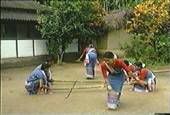
The area is full of archeology relics and artifacts some discovered and some yet to be discovered.
Mayong Central Museum & Emporium in the village has preserved some of the ancient manuscript of Black Magic and Ayurveda.

For an illiterate villager in Assam, magic is a forbidden art, for a city-dweller it is a white lie. To a practitioner it is an echolike force or effect of cosmic energy from within. Though one cannot interpret a scientific cause of certain ‘uncommon’ incidents, the belief is sometimes so strong that there is no need for proof, no matter how irrational. There is still a lot to be explained and a lot more that sorely needs explanation, but maybe Maya or magic is one those aspects that lie beyond the penultimate exteriors of the human brain.
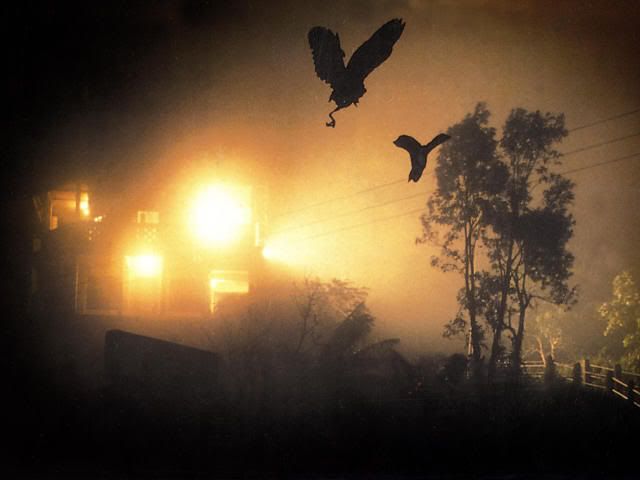
Jatinga , a place of mesmerizing natural beauty situated in the North-Eastern region of India is a village on a ridge, is located in the North Cachar Hills district, Assam State in India. It is 330km south of Guwahati. This small place of beauty is mainly inhabited by about 2,500 Jaintia tribal people.
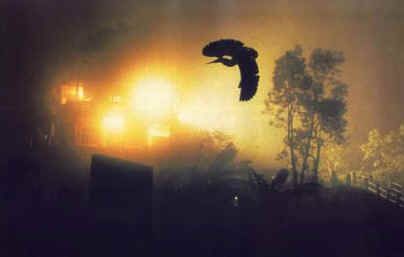
At the end of monsoon months, mysterious behavior of birds takes place here. During that particular season birds from around the world come to this area to "commit suicide".
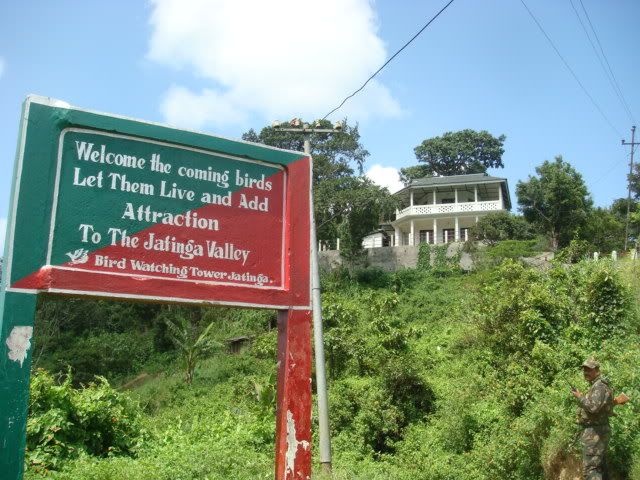 The most puzzling thing about this phenomenon is that so many species of diurnal birds should be on the move at a time when, actually, they should be fast asleep. During moonless and foggy dark nights between 7 p.m. and 10 p.m., flying birds come crashing to the ground with no prior warning. This phenomenon does not occur in the whole valley but only in a well-defined strip, 1.5 km long and 200 mts. wide.
The most puzzling thing about this phenomenon is that so many species of diurnal birds should be on the move at a time when, actually, they should be fast asleep. During moonless and foggy dark nights between 7 p.m. and 10 p.m., flying birds come crashing to the ground with no prior warning. This phenomenon does not occur in the whole valley but only in a well-defined strip, 1.5 km long and 200 mts. wide.
During these foggy moonless nights when the wind blows from the north to south, the birds in this place remain dazed and inactive. The birds disheveled and dazed do not try to fly as if they are half dead.
Some of the birds caught there



 Many ornithologists have studied about this mystic phenomenon of Jatinga, but no single hypothesis could give a comprehensive explanation about this mystery. One hypothesis is that
Many ornithologists have studied about this mystic phenomenon of Jatinga, but no single hypothesis could give a comprehensive explanation about this mystery. One hypothesis is that
this strange phenomenon is attributed to the electro-magnetic characteristics of the Jatinga ridge. The ridge is bounded nearly on all sides by fault planes. This combined with the mineral content of the valley with its high magnetic properties could be responsible for certain geo-physical changes in the atmosphere here. These are enhanced during the monsoon months of September and October when the ground water comes up almost to the ridge top of Jatinga. All these are believed to cause certain unusual changes in the gravitational pull around the region. It is possible that these affect the nervous system of the birds making them completely disoriented and confused when they happen to fly over the Jatinga ridge. .
Contrary to the popular belief, ‘birds do not commit suicide’. The phenomenon might occur due to certain conditions such as the birds might be caught in wind and fog and are disoriented. They may get attracted towards light sources of the villagers. Thus in trying to reach the light sources, they might hit trees or other sources and get injured which caused their death. Thus number of birds might have died. A similar sort of incident occurs in Phillipines during similar weather conditions as in Jatinga. In Phillipines on windy foggy, moonless nights, birds are trapped by the local people which they call Twang .Even the villagers of Jatinga trap the disheveled birds by a forceful swing of the bamboopoles or catapults, when they fly towards the light source. They even try different methods to persuade the birds sitting on the top to come down so that they can easily catch it for food. Thus these birds fall easy prey to the villagers.
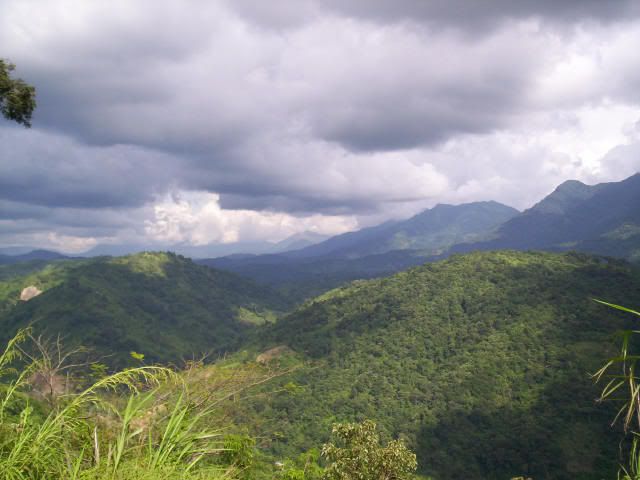
But till today the phenomenon remains a mystery cause the mystery is far above human understanding....If this mystery is not solved, we may lose some species of this magnificent feathered creation of God.
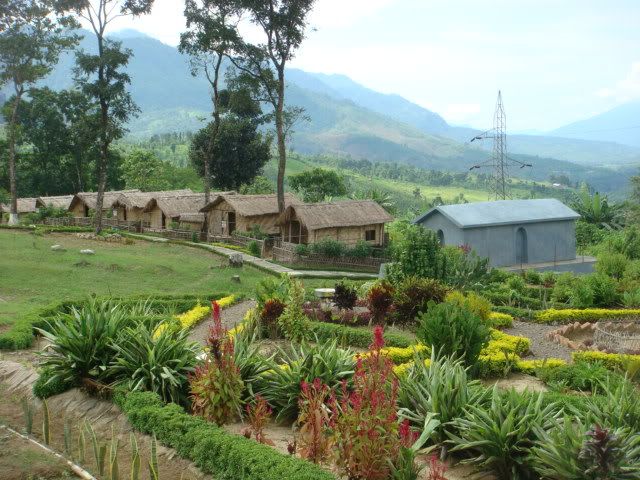
And Excellent place to watch a wided varietes of birds species with good resort facilities available there.
Majuli is situated at a distance of 20 km from Jorhat. One can take the bus or a hired taxi to the Nimati Steamer Ghat from where ferry services ply. The distance takes over three hours to cover, with three bus rides and two ferry rides.
Majuli or Majoli s fluvial island in the Brahmaputra River, in the state of Assam. Majuli is often erroneously cited as the largest river island in the world by the Indian media, but in fact it is merely the largest freshwater island in South Asia. Majuli can also be said as Largest riverine Delta system in the world

A wetland, Majuli is a hotspot for flora and fauna, harbouring many rare and endangered avifauna species including migratory birds that arrive in the winter season. Among the birds seen here are: the Greater Adjutant Strok , Pelican, Siberian Crane and the Wishtling teal. After dark wild geeese and ducks fly in flocks to distant destinations. The island is almost pollution free owing to the lack of polluting industries and factories and also the chronic rainfall. he island is under threat due to the extensive soil erosion on its banks. The reason for this magnitude in erosion is the large embankments built in neighbouring towns upriver to prevent erosion there during the monsoon season when the river distends its banks.
Kamakhya is an important Shakta pilgrimage site.

One of the most persistent mythologies concerning the origin of worship at the site is associated with the myth of Sati. The goddess Sati burned herself during the sacrificial fire at her father Daksha Prajapati's abode, because her father was scornful of her husband, the ascetic god Shiva.
According to one version of the story, Shiva threw the body of Sati over his shoulder, flew into a rage, and began his Dance of Death to bring about the destruction of the universe. The other Gods, afraid of their annihilation, implored Vishnu pacify Shiva. Thus, wherever Shiva wandered while dancing, Vishnu followed. He dared not come close to the terrible Shiva, so he sent his discus Sudarshana to destroy the corpse of Sati. Pieces of her body fell until Shiva was left without a body to carry. Seeing this, Shiva sat down to do great penance.
There are supposedly 51 pieces of Sati scattered across the Indian subcontinent. Her yoni (vulva or womb) is said to have fallen on the spot where the Kamakhya Temple stands today, and hence the spot has a preeminent status among the Mother Goddess' temples. When the yoni of Sati fell on the hill where the temple stands, the hill turned blue and came to be known as Nilachal or Blue Mountain.Kamakhya, the Goddess/yoni, exists in the main shrine as a large cleft in the bedrock, covered by water flowing upward from an underground spring, generally covered by a red cloth, flowers, and red sindur powder.There is no idol image of Devi Kamakhya in the Kamakhya Temple but there is a sculptured image of the Yoni of the very Goddess, which is the main object that creates reverence. The temple basically is a natural cave with a spring. Down a few steps inside the hill into the cave there is a dark, mysterious chamber. Here, wrapped with a silk sari and covered with flowers, is kept the 'Mahamudra matra yoni'.

The fine road, which can be used for light vehicular traffic and the stone pathway, connect the foot of the hill with the top. Buses ply every 10 or 15 minutes from Guwahati to the foot of the hill from where one can go to the top by taxies that are readily available at the bus stop.Kamakhya as the place is popularly known, is reckoned to be the most significant pilgrimage in the east. It is a pilgrimage to the Mother Goddess from whom springs forth all material and ethereal creation. Kamakhya is also the home of the most respected school of Tantra believed by the followers of the Tantric path to be a shortcut to salvation.From the foothills of Nilachal there are two ways of traveling to the top. One is a small metalled serpentine road where vehicles ply. The other is a steep climb meant to be covered only by foot. This steep path is known by its ancient name, Mekhela Ujua Path. It goes through lush green canopied paths with various temples and stone structures and rock carvings on the way. It is believed that this path was built in a single night by the demon King Narakasura of Pragjyotishpur, the name of ancient Assam, to fulfill the Goddess Kamakhya’s wishes as a precondition to fulfill his ambition to marry her. The Goddess ultimately frustrated his ambition by tricking him when she showed him an artificial morning just when he was about to complete the construction of the path. Many such legends abound about Kamakhya.
From Kamakhya the next move is generally taken to Kachapukhuri. This is a natural pond full of turtles. Nobody knows as to how, when, why and who brought these amphibians from the plains to so high an altitude.
Around Kamakhya there are other temples of which the Bhutanese Tara temple and the shrine of the snake Goddess, Manasa, are more frequented. Manasa is menacingly dark because as soon as lights are fixed on, they immediately get fused.
Further up the hill, Bhubaneswari temple is situated at the highest point of the hill and offers a spectacular view of the city and the Brahmaputra river.



























